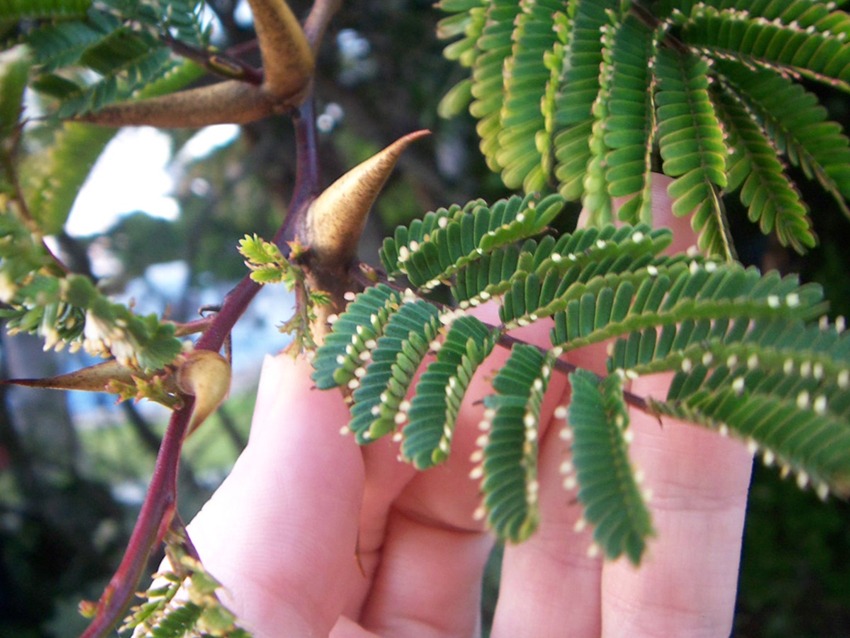Vachellia cornigera, commonly known as bullhorn acacia, is a swollen-thorn tree native to Mexico and Central America.

The common name of "bullhorn" refers to the enlarged, hollowed-out, swollen thorns that occur in pairs at the base of leaves, and resemble the horns of a steer.
Bullhorn acacia is best known for its symbiotic relationship with Pseudomyrmex ferruginea, an ant that lives in its hollowed-out thorns. Unlike other acacias, bullhorn acacias are deficient in the bitter alkaloids usually located in the leaves that defend against ravaging insects and animals. Bullhorn acacia ants fulfill that role.
The ants act as a defense mechanism for the tree, protecting it against harmful insects, animals or humans that may come into contact with it. The ants live in the thorns. In return, the tree supplies the ants with protein-lipid nodules and nectar. These bodies have no known function other than to provide food for the ants. The aggressive ants release an alarm pheromone and rush out of their thorn “barracks” in great numbers.
Livestock can apparently smell the pheromone and avoid these acacias, since getting stung in the mouth and tongue is an effective deterrent to browsing on the tender foliage. In addition to protecting V. conigera from leaf-cutting ants and other unwanted herbivores, the ants also clear away invasive seedlings around the base of the tree that might overgrow it and block out vital sunlight.
